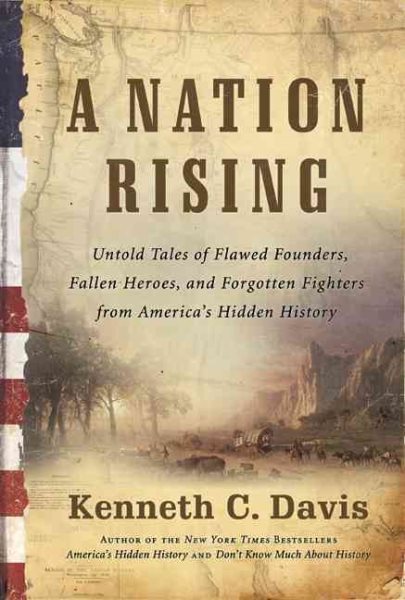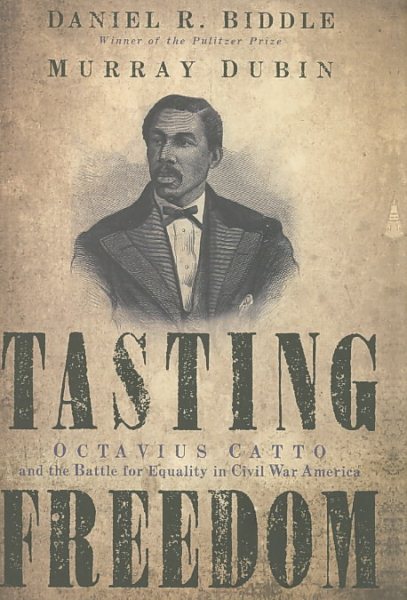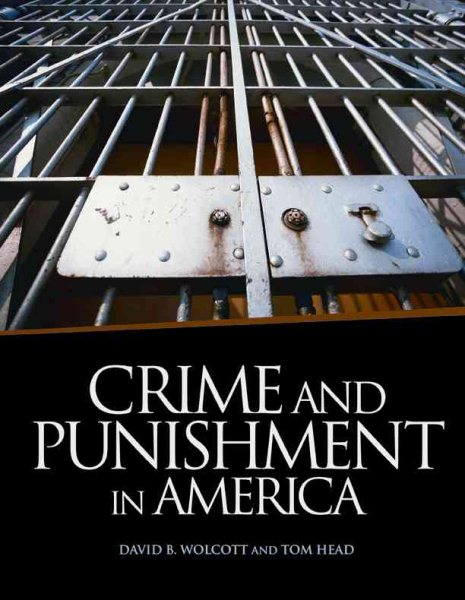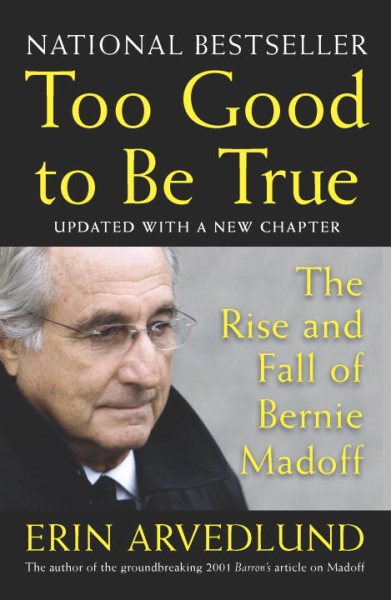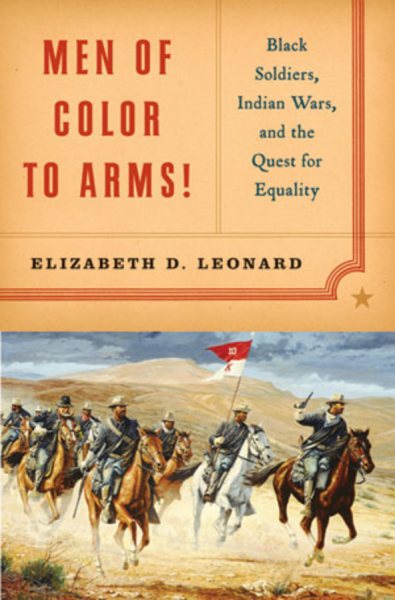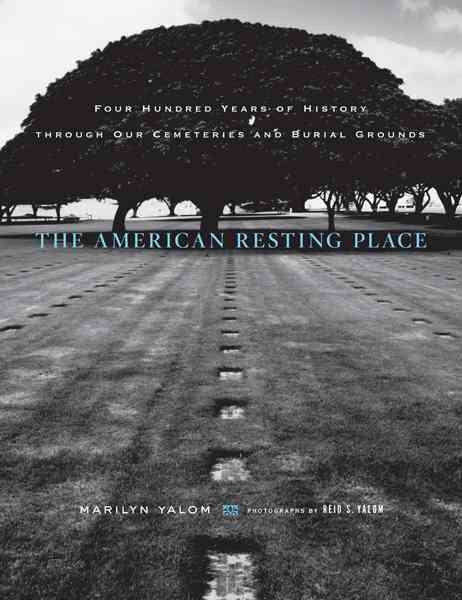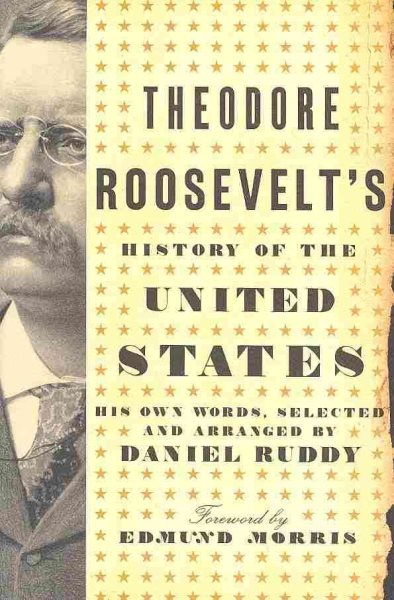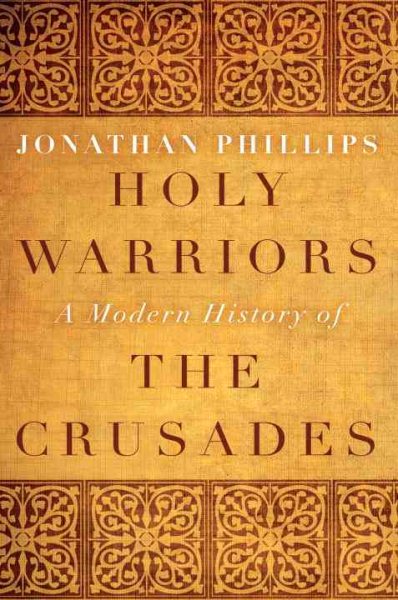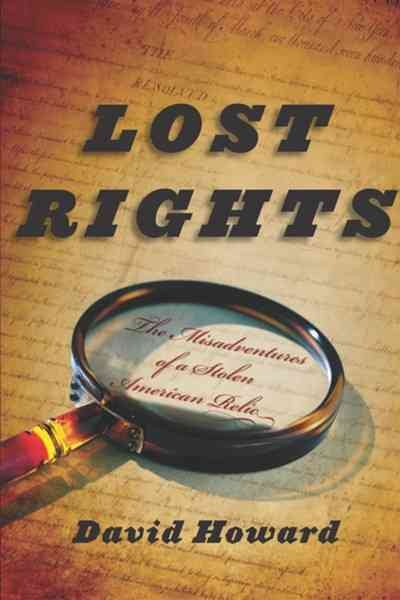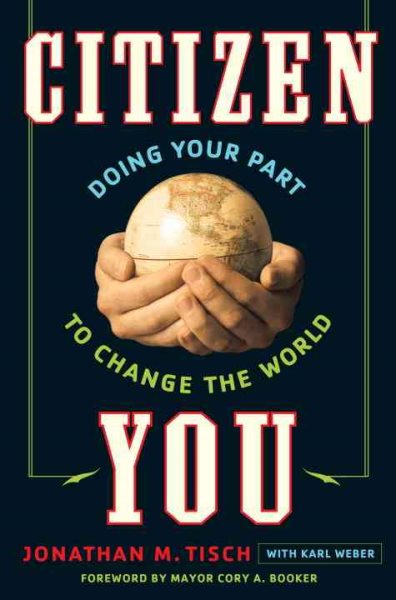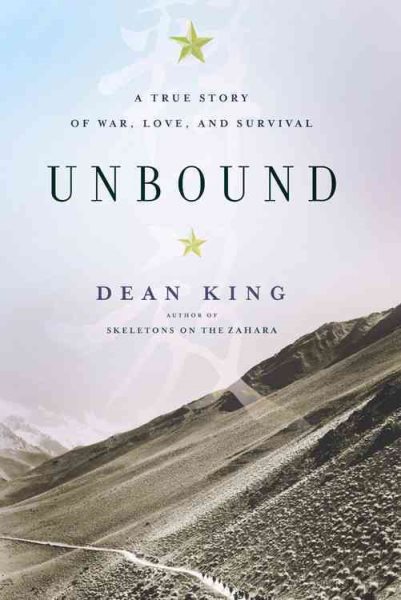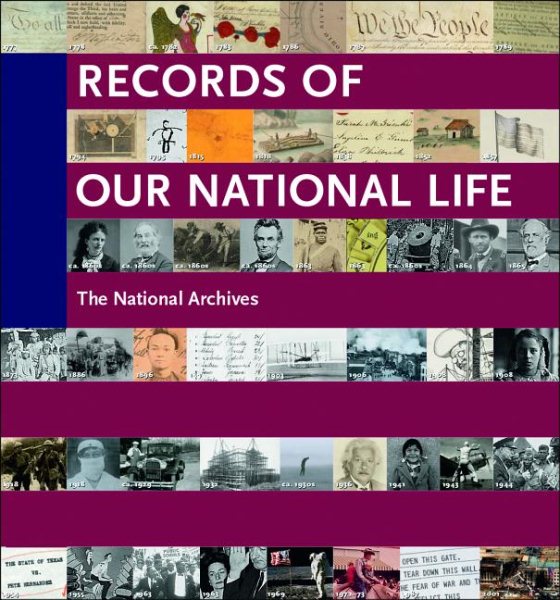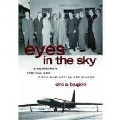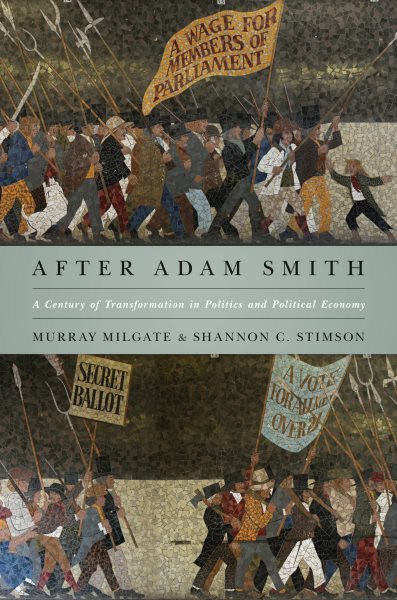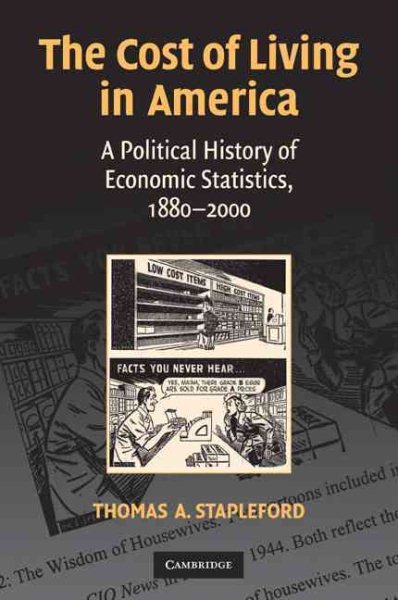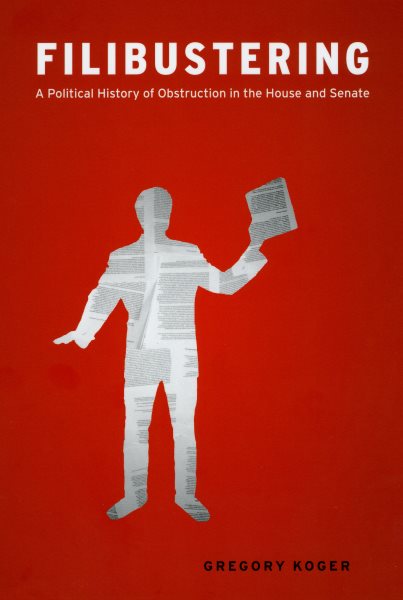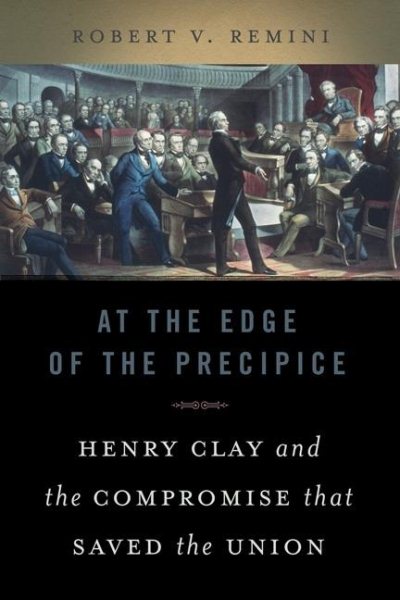Wednesday, December 29, 2010
Children of Fire: a history of African Americans
by Thomas C. Holt. Holt (James Westfall Thompson Professor of American & African American History, Univ. of Chicago; The Problem of Race in the 21st Century) eschews the traditional topically driven historical narrative here in favor of a more human attempt to relate history as it was lived chronologically. He chronicles the major events, as well as the unexplored tragedies and triumphs of ordinary and extraordinary African Americans through the successive eras of the last 400 years, beginning with the first recorded slaves to arrive at Jamestown in 1621 and ending with the election of Barack Obama as President. Holt's thoroughly researched material and scholarly tone make this work well suited for use as a college text, comparing favorably with standards like Darlene Clark Hine and others' African Americans: A Concise History and John Hope Franklin's seminal From Slavery to Freedom. VERDICT Academics and educational institutions, along with all interested readers, will want to add this to their African American history collections. --Library Journal (Check catalog)
Tuesday, December 7, 2010
A wicked company : the forgotten radicalism of the European Enlightenment
by Phillipp Blom. Blom here returns to the field of an earlier triumph (Enlightening the World: Encylopedie, the Book That Changed the Course of History, 2005) to take the measure of Encyclopedie's editor, Denis Diderot. Placing Diderot in the natural habitat of Enlightenment philosophes, the Parisian salon circa 1750, Blom presents one Diderot habituated, hosted by Baron Paul Thierry d'Holbach. Baron who? readers may wonder, but d'Holbach attracted Diderot, Rousseau, and Hume to his salon and also penned atheistic philosophical tracts. If those endure less in intellectual history than the writings of his guests, d'Holbach's hospitality receives Blom's recognition as an incubator of the Enlightenment. Over the baron's table, as conversationalists volleyed their subversions of the ancien regime and then crystallized the badinage into published works, Blom pauses to summarize its arguments. Those who might not be pleased with such paraphrasing might be placated by Blom's interludes about the relationships among d'Holbach's group, their japes, their lusts, their acrimonies: Rousseau, the great lover of humanity, hated Diderot and Hume. A perceptive, readable portrayal of a seminal coterie in the history of ideas. --Booklist (Check Catalog)
Saturday, November 27, 2010
Driven West : Andrew Jackson's trail of tears to the Civil War
by A J Langguth. Excluding the most die-hard southern apologists, there is a consensus among historians that the original sin of slavery lay at the root of the sectional strife that developed into the Civil War. Within that consensus, however, there remains considerable debate. Why, for example, did the strife break out into a full-blown civil war, and why did it break out when it did? Langguth asserts that the uprooting of the so-called Five Civilized Tribes under the Jackson administration set in motion a train of events that led to the Mexican War. To illustrate his argument, Langguth traces four decades of American history between the end of the War of 1812 and the end of the Mexican War. He does so primarily by providing examinations of the personalities and actions of key players in those decades, including Henry Clay, John Calhoun, John Quincy Adams, and Cherokee leaders Major Ridge and John Ross. Langguth may not prove a direct line of causation to the Civil War, but he writes well and provides interesting insights into the actions of these men. --Booklist (Check Catalog)
Saturday, October 30, 2010
Faces of America: How 12 Extraordinary People Discovered Their Pasts
By Henry Louis Gates, Jr.
The complex immigrant story of the United States viewed through extensive genetic and genealogical research into the backgrounds of 12 ethnically diverse, famous Americans.
Renowned scholar Gates (African American Studies/Harvard Univ.; The Signifying Monkey, 2010, etc.), who narrated the recent PBS mini-series on which this book is based, selected people of accomplishment who interested him, including writers, a director, a chef, a musician, a comedian, a physician, a figure skater, even a queen. With the assistance of genealogical researchers and geneticists, he explored their very different backgrounds and shared his findings with his subjects—not only about their named ancestors but also about what their genes revealed about their family trees. After an introduction and some explanatory notes about DNA testing, Gates offers 12 similarly structured chapters. First he briefly cites the subject's accomplishments, tells why he or she is part of the project and provides a brief biographical sketch. In the next section, the author puts the ancestors' personal stories into a broader historical context. Finally he tells each subject what the DNA tells him about the subject's ancestral lineage, where his ancestors probably lived in the distant past, how they are linked with others on the human family tree and what percentage of the subject's heritage is European, African or Asian/Native American. Each chapter concludes with the subject's reaction to the facts and the linkages that Gates has uncovered for them—e.g., Mike Nichols was thrilled to learn that he is a distant cousin of Albert Einstein, and Malcolm Gladwell was stunned to learn that his mixed-race Jamaican ancestors were slave-owners. Other subjects include such luminaries as Meryl Streep, Yo-Yo Ma, Stephen Colbert, Mario Batali and Mehmet Oz.
While the personal discoveries provide human interest in a sometimes tedious recitation of genealogical information and technical genetic data, it is the broader sweep of history and the causes and ramifications of human migrations that engage the reader and give the book its impact.
Check Catalog
The complex immigrant story of the United States viewed through extensive genetic and genealogical research into the backgrounds of 12 ethnically diverse, famous Americans.
Renowned scholar Gates (African American Studies/Harvard Univ.; The Signifying Monkey, 2010, etc.), who narrated the recent PBS mini-series on which this book is based, selected people of accomplishment who interested him, including writers, a director, a chef, a musician, a comedian, a physician, a figure skater, even a queen. With the assistance of genealogical researchers and geneticists, he explored their very different backgrounds and shared his findings with his subjects—not only about their named ancestors but also about what their genes revealed about their family trees. After an introduction and some explanatory notes about DNA testing, Gates offers 12 similarly structured chapters. First he briefly cites the subject's accomplishments, tells why he or she is part of the project and provides a brief biographical sketch. In the next section, the author puts the ancestors' personal stories into a broader historical context. Finally he tells each subject what the DNA tells him about the subject's ancestral lineage, where his ancestors probably lived in the distant past, how they are linked with others on the human family tree and what percentage of the subject's heritage is European, African or Asian/Native American. Each chapter concludes with the subject's reaction to the facts and the linkages that Gates has uncovered for them—e.g., Mike Nichols was thrilled to learn that he is a distant cousin of Albert Einstein, and Malcolm Gladwell was stunned to learn that his mixed-race Jamaican ancestors were slave-owners. Other subjects include such luminaries as Meryl Streep, Yo-Yo Ma, Stephen Colbert, Mario Batali and Mehmet Oz.
While the personal discoveries provide human interest in a sometimes tedious recitation of genealogical information and technical genetic data, it is the broader sweep of history and the causes and ramifications of human migrations that engage the reader and give the book its impact.
Check Catalog
A Nation Rising: Untold Tales of Flawed Founders, Fallen Heroes, and Forgotten Fighters from America's Hidden History
By Kenneth C. Davis
Bestselling author Davis reprises the "hidden" concept that enlivened his America's Hidden History by pulling stories out from the crucial first fifty years of the nineteenth century and probing their complexities. Hidden, indeed, were aspects of these episodes: Burr's 1807 trial with its political intrigue; the "Bible Riots" in Philadelphia reflecting the anti-immigrant sentiments of the times; a mutiny aboard a slave ship that exemplifies the destructive grip of racism on personal and national life. Davis raises the issues of ambition, power, intolerance, civil rights, freedom of the press, and more that frustrated our beginnings and shape our present still.
Check Catalog
Bestselling author Davis reprises the "hidden" concept that enlivened his America's Hidden History by pulling stories out from the crucial first fifty years of the nineteenth century and probing their complexities. Hidden, indeed, were aspects of these episodes: Burr's 1807 trial with its political intrigue; the "Bible Riots" in Philadelphia reflecting the anti-immigrant sentiments of the times; a mutiny aboard a slave ship that exemplifies the destructive grip of racism on personal and national life. Davis raises the issues of ambition, power, intolerance, civil rights, freedom of the press, and more that frustrated our beginnings and shape our present still.
Check Catalog
Friday, October 29, 2010
Aftermath : following the bloodshed of America's wars in the Muslim world
by Nir Rosen. This could not be a more timely or trenchant examination of the repercussions of the U.S. involvement in Iraq and Afghanistan. Journalist Rosen has written for The New Yorker, the New York Times Magazine, and Harper's, among other publications, and authored In the Belly of the Green Bird: The Triumph of the Martyrs in Iraq (2006). His on-the-ground experience in the Middle East has given him the extensive contact network and deep knowledge advantages that have evaded many, stymied by the great dangers and logistical nightmares of reporting from Iraq and Afghanistan. This work is based on seven years of reporting focused on how U.S. involvement in Iraq set off a continuing chain of unintended consequences, especially the spread of radicalism and violence in the Middle East. Rosen offers a balanced answer to the abiding question of whether our involvement was worth it. Many of his points have been made by others, but Rosen's accounts of his own reactions to what he's witnessed and how he tracked down his stories are absolutely spellbinding. --Booklist (Check catalog)
Tuesday, October 12, 2010
Tasting Freedom: Octavius Catto and the Battle for Equality in Civil War America
By Daniel R. Biddle & Murray Dubin
Killed in an 1871 Philadelphia Election Day riot to keep blacks from voting, Octavius Valentine Catto (1839–71) was a gifted schoolteacher, spellbinding classical orator, and first-rate second baseman. Most important, he was a civil rights activist. With fellow blacks who called themselves a "band of brothers," Catto pushed to desegregate streetcars, secure voting rights, and demand rigor in schools in Pennsylvania and its self-styled City of Brotherly Love during the turbulent Civil War era. Pulitzer Prize-winning journalist Biddle and his retired Philadelphia Inquirer colleague Dubin here recount Catto's life. In brightly written, accessible, detail-packed prose, they follow Catto from birth in Charleston, SC, through his family's move north, his schooling, and his camaraderie with the likes of black leaders such as Frederick Douglass. The captivating story illustrates the too often neglected street battles for black rights in northern cities long before the hot summers of the 1960s. VERDICT Biddle and Dubin have produced an entrancing portrait of a leading Renaissance man for equal rights; their book demands attention from students of the theme, time, and place. Nothing matches it at the moment as a prequel to Thomas J. Sugrue's much-noted Sweet Land of Liberty: The Forgotten Struggle for Civil Rights in the North.
Check Catalog
Friday, October 8, 2010
Year of meteors : Stephen Douglas, Abraham Lincoln, and the election that brought on the Civil War
by Douglas R. Egerton. In the wake of the first election of an African American as President of the United States, Egerton (history, LeMoyne Coll.; Death or Liberty: African Americans and Revolutionary America) examines the importance of race in the presidential election of 1860, when a relatively unknown candidate came from behind to be elected to the nation's highest office. Following the fortunes of Democrat Stephen Douglas, Republican Abraham Lincoln, and a host of others significant to the election, Egerton highlights the central role played by race in the dynamics of political party, sectionalism, and politics generally in the election after which the nation was plunged into Civil War. VERDICT Heavily documented, relying on substantial primary and manuscript sources, this book sheds new light on an often researched topic. All those with an interest in the importance of race in the nation's history will want to acquire this highly readable work, even if they own other recent studies of the election, such as Gary Ecelbarger's The Great Comeback: How Abraham Lincoln Beat the Odds To Win the 1860 Republican Nomination. --Library Journal. (Check Catalog)
Tuesday, September 28, 2010
Mao's great famine : the history of China's most devastating catastrophe, 1958-1962
by Frank D. Kotter. From 1958 to 1962, Mao Zedong oversaw a massive collectivization, announced to the world as his "Great Leap Forward," an attempt to push China, both agriculturally and industrially, into the 20th century. Instead Mao destroyed the lives of millions of Chinese, forcing them to work under inhuman conditions on "the people's" farms. A devastating famine that killed approximately 30 million resulted from poor planning, execution, and widespread corruption. When even Mao's closest colleagues began to point out this folly, Mao consolidated his power and continued down this road of devastation with the "Great Cultural Revolution" (1966-76). Dikotter (Sch. of Oriental & African Studies, Univ. of London; The Discourse of Race in Modern China) writes a compelling account of the Great Leap Forward. Verdict Aided by newly released historical documents detailing the savage infighting and backstabbing of those in power and the extent of the nationwide damage, Dikotter has produced one of the best single-volume resources on the topic. Although a scholarly, heavily footnoted work, its flowing narrative-effectively a cautionary tale on the destructive powers of misguided ambition and blind hubris-reads well. Recommended for specialists as well as interested general readers. --Library Journal (Check Catalog)
Tuesday, September 21, 2010
Let the swords encircle me : Iran - a journey behind the headlines
by Scott Peterson. Few nations contain such stark, violent, and dangerous contradictions as the Iran depicted in this revelatory panorama. Christian Science Monitor correspondent Peterson (Me Against My Brother) presents a country at war with itself: a puritanical, xenophobic theocracy lording over a hedonistic, Western-oriented youth culture; an impoverished economy awash with an oil-rich elite; a quasi-democracy where free-wheeling election debates coexist with a lawless police state and torture chambers. (His narrative culminates with a gripping account of the bloody government crackdown on demonstrators protesting the 2009 presidential election.) Drawing on years of in-country reporting, Peterson pieces together a mosaic of discordant scenes, taking the reader to an American flag-burning rally that embarrasses many of its attendees, a museum dedicated to the country's history of torturing dissidents, and a ski resort where young couples court arrest by kissing in public. He sketches a colorful gallery of Iranians, including mullahs and politicians, heavy-metal rockers, avant-garde artists, dour war veterans steeped in a cult of martyrdom, and callow lotharios. Incisive, humane, and full of vivid reportage, Peterson's sprawling study is perhaps the best account we have of Iran's complex, embattled reality. --Booklist (Check Catalog)
Thursday, September 9, 2010
Cradle of gold : the story of Hiram Bingham, a real-life Indiana Jones, and the search for Machu Picchu
by Christopher Heaney. On an archaeological trip to Peru on July 24, 1911, Hiram Bingham, an American explorer and history professor at Yale, happened upon the ruins of the Inca city of Machu Picchu. Although the site was already known to the local native people, Bingham made the Machu Picchu ruins famous and received acclaim as their "discoverer." Heaney presents a well-researched and very readable biography of Bingham from his childhood in Hawaii as the son of missionaries, through his education and careers as historian, educator, explorer, and finally politician. He probes the depths of Bingham's work and character, examining setbacks, scandals, and achievements and skillfully unraveling Bingham's role in the controversy that still exists today between the government of Peru and Yale University over the ownership of the Machu Picchu burials and artifacts. Heaney shows Bingham as a complex and ambitious man inculcated with the racial attitudes of his time, but he also convincingly shows that despite his shortcomings, Bingham made a significant contribution to the study of South American archaeology and Inca history. The book's title is something of a misnomer, as Bingham found no gold at Machu Picchu, and the name "cradle of gold" is used in the text to refer to a different Incan archaeological site that Bingham visited. VERDICT Recommended for history and archaeology enthusiasts interested in a detailed account of the life of an archaeological icon. --Library Journal (Check Catalog)
Saturday, August 28, 2010
The Woman Who Shot Mussolini
By Frances Stonor Saunders
The woman who shot Mussolini was named Violet Gibson, and she fired in 1926. Grazed by the bullet, Mussolini resumed the march of fascism, while Gibson was dispatched to an English mental asylum and died in 1956. In this excellent biographical reconstruction, Saunders plumbs the depths of a woman who seems ultimately unfathomable. Raised in the Protestant ascendancy of late-nineteenth-century Ireland, Gibson departed from parental expectations: intelligent and inclined to mysticism, she delved into theosophy before converting to Catholicism. Saunders also uncovers a dawning political consciousness in Gibson's involvement with the peace movement, but it is Gibson's mental condition and the treatment she received that predominate here. Although her suicide attempts and assaults on others gave cause for alarm, Gibson, after her assassination attempt, was the victim of deceptions by doctors, lawyers, and family members. Venturing that the subterfuges stemmed from diplomatic expedience and mental-health patients' lack of rights at the time, Saunders nevertheless portrays Gibson's remote personality. Saunders displays fine sourcing and sensitivity in this superior historical work.
Check Catalog
The woman who shot Mussolini was named Violet Gibson, and she fired in 1926. Grazed by the bullet, Mussolini resumed the march of fascism, while Gibson was dispatched to an English mental asylum and died in 1956. In this excellent biographical reconstruction, Saunders plumbs the depths of a woman who seems ultimately unfathomable. Raised in the Protestant ascendancy of late-nineteenth-century Ireland, Gibson departed from parental expectations: intelligent and inclined to mysticism, she delved into theosophy before converting to Catholicism. Saunders also uncovers a dawning political consciousness in Gibson's involvement with the peace movement, but it is Gibson's mental condition and the treatment she received that predominate here. Although her suicide attempts and assaults on others gave cause for alarm, Gibson, after her assassination attempt, was the victim of deceptions by doctors, lawyers, and family members. Venturing that the subterfuges stemmed from diplomatic expedience and mental-health patients' lack of rights at the time, Saunders nevertheless portrays Gibson's remote personality. Saunders displays fine sourcing and sensitivity in this superior historical work.
Check Catalog
Crime and Punishment in America
By David B. Wolcott and Tom Head
Surveys the history of criminal justice and punishment in the United States, drawing on source materials ranging from the 1654 Maryland Public Morality Codes to trial transcripts from the O.J. Simpson Trial.
Check Catalog
Surveys the history of criminal justice and punishment in the United States, drawing on source materials ranging from the 1654 Maryland Public Morality Codes to trial transcripts from the O.J. Simpson Trial.
Check Catalog
Thursday, August 26, 2010
Too Good to Be True: The Rise and Fall of Bernie Madoff
By Erin Arvedlund
This book is one of the first of what will likely be a spate of titles on Bernie Madoff. Madoff's initial contribution to Wall Street was the development of electronic trading, which revolutionized securities markets by facilitating increased trading volume at reduced cost. Simultaneously, he ran a hedge fund that proved to be a Ponzi scheme that defrauded its investors of billions. Madoff's reputation and ability to generate trust, his connections through family and friends, and his system of feeder fees contributed to his ability to perpetuate the fraud. Other explanations include lack of regulation of hedge funds and the incompetence of SEC investigators. Arvedlund, an investigative journalist, was among the first to suspect that Madoff's consistently superior returns were an illusion. Her timely book is the result of numerous interviews with individuals who had connections to Madoff, ranging from colleagues and employees to schoolmates. Madoff's greed, smoothness, and arrogance clearly come through, but so does the greed of the investors who thought they were receiving superior returns.
Check Catalog
This book is one of the first of what will likely be a spate of titles on Bernie Madoff. Madoff's initial contribution to Wall Street was the development of electronic trading, which revolutionized securities markets by facilitating increased trading volume at reduced cost. Simultaneously, he ran a hedge fund that proved to be a Ponzi scheme that defrauded its investors of billions. Madoff's reputation and ability to generate trust, his connections through family and friends, and his system of feeder fees contributed to his ability to perpetuate the fraud. Other explanations include lack of regulation of hedge funds and the incompetence of SEC investigators. Arvedlund, an investigative journalist, was among the first to suspect that Madoff's consistently superior returns were an illusion. Her timely book is the result of numerous interviews with individuals who had connections to Madoff, ranging from colleagues and employees to schoolmates. Madoff's greed, smoothness, and arrogance clearly come through, but so does the greed of the investors who thought they were receiving superior returns.
Check Catalog
Men of Color to Arms!: Black Soldiers, Indian Wars, and the Quest for Equality
By Elizabeth D. Leonard
In 1863, Frederick Douglass promised African Americans that serving in the military offered a sure path to full citizenship. More than 180,000 heeded the call to defend the Union against the Confederate rebellion. Later, thousands more enlisted to subdue the Indians and expand and strengthen the national domain. In this sharply drawn history, Elizabeth D. Leonard takes the story of these frequently overlooked American soldiers beyond traditional political and military confines to consider the men's aspirations and achievements as well as their setbacks and disappointments. Framed by Appomattox in 1865 and the Chicago World's Fair in 1893, and packed with individuals' stories, details of battles fought, and descriptions of army life, Leonard's work examines black soldiers' contributions to the nation's post-Civil War expansion and consolidation and sheds important light on the myriad obstacles the buffalo soldiers faced in their ongoing struggle for racial equality.
Check Catalog
In 1863, Frederick Douglass promised African Americans that serving in the military offered a sure path to full citizenship. More than 180,000 heeded the call to defend the Union against the Confederate rebellion. Later, thousands more enlisted to subdue the Indians and expand and strengthen the national domain. In this sharply drawn history, Elizabeth D. Leonard takes the story of these frequently overlooked American soldiers beyond traditional political and military confines to consider the men's aspirations and achievements as well as their setbacks and disappointments. Framed by Appomattox in 1865 and the Chicago World's Fair in 1893, and packed with individuals' stories, details of battles fought, and descriptions of army life, Leonard's work examines black soldiers' contributions to the nation's post-Civil War expansion and consolidation and sheds important light on the myriad obstacles the buffalo soldiers faced in their ongoing struggle for racial equality.
Check Catalog
Wednesday, August 25, 2010
The American Resting Place: Four Hundred Years of History Through Our Cemeteries and Burial Grounds
By Marilyn Yalom, with Photographs by Reid S. Yalom
Yalom is a cultural historian; her son, Reid, is an author and photographer. Together they have produced a curious, interesting, and surprisingly moving examination of the American practices of death ceremonies and burial ranging from pre-Jamestown Native American burial mounds to our contemporary, industrialized methods. The well-written text covers a variety of topics, including class and racial distinctions in cemeteries, religious tensions engendered by the building of a Muslim cemetery after 9/11, and an examination of how municipalities are coping with overcrowded burial sites. But it is the remarkable collection of more than 60 photographs that is likely to stir emotions. These include haunting images of lonely crosses at a Spanish mission, rows of well-manicured gravesites in California, and ancient tombstones with barely legible epitaphs at a Jewish cemetery in South Carolina. Both general readers and those with a specific interest in this unusual subject should find value in this work.
Check Catalog
Yalom is a cultural historian; her son, Reid, is an author and photographer. Together they have produced a curious, interesting, and surprisingly moving examination of the American practices of death ceremonies and burial ranging from pre-Jamestown Native American burial mounds to our contemporary, industrialized methods. The well-written text covers a variety of topics, including class and racial distinctions in cemeteries, religious tensions engendered by the building of a Muslim cemetery after 9/11, and an examination of how municipalities are coping with overcrowded burial sites. But it is the remarkable collection of more than 60 photographs that is likely to stir emotions. These include haunting images of lonely crosses at a Spanish mission, rows of well-manicured gravesites in California, and ancient tombstones with barely legible epitaphs at a Jewish cemetery in South Carolina. Both general readers and those with a specific interest in this unusual subject should find value in this work.
Check Catalog
Rendezvous with Destiny: Ronald Reagan and the Campaign That Changed America
By Craig Shirley (with a Foreword by George F. Will)
This is an "inside baseball"-style account of the Ronald Reagan presidential campaign of 1980. While describing in great detail the various ups and downs of the campaign, as based on his analysis of the campaign files and the recollections of some 150 individuals involved in the campaign, the author admiringly casts Reagan as a deeply principled politician who overcame opposition from within and without his own party by staunchly hewing to his beliefs.
Check Catalog
This is an "inside baseball"-style account of the Ronald Reagan presidential campaign of 1980. While describing in great detail the various ups and downs of the campaign, as based on his analysis of the campaign files and the recollections of some 150 individuals involved in the campaign, the author admiringly casts Reagan as a deeply principled politician who overcame opposition from within and without his own party by staunchly hewing to his beliefs.
Check Catalog
Paradise General: Riding the Surge at a Combat Hospital in Iraq
By Dr. Dave Hnida
Hnida never forgot the horror of his alcoholic father's WWII experience, revealed as he drove his son to college, their last time together. The need to understand that horror later drove Hnida, as a middle-aged doctor, to war himself. He signed up for two tours of duty in Iraq. On the first tour, he was equipped with an M16 and medical tools and worked with convoys along the highways of Baghdad. His second time in Iraq, during the surge, Hnida worked at a combat-support hospital, the equivalent of a MASH unit. Hnida recalls the experience of working with much younger soldiers and doctors and the struggle to adjust to army discipline and protocol on top of the rigors of war and a hostile desert environment. A family doctor in civilian life, he was assigned to the ER, fighting his own constant fear as he worked on wounds no civilian doctor ever saw. Through it all, he developed close and abiding friendships with the other doctors and admiration for the young soldiers who risked their lives on a daily basis.
Check Catalog
Hnida never forgot the horror of his alcoholic father's WWII experience, revealed as he drove his son to college, their last time together. The need to understand that horror later drove Hnida, as a middle-aged doctor, to war himself. He signed up for two tours of duty in Iraq. On the first tour, he was equipped with an M16 and medical tools and worked with convoys along the highways of Baghdad. His second time in Iraq, during the surge, Hnida worked at a combat-support hospital, the equivalent of a MASH unit. Hnida recalls the experience of working with much younger soldiers and doctors and the struggle to adjust to army discipline and protocol on top of the rigors of war and a hostile desert environment. A family doctor in civilian life, he was assigned to the ER, fighting his own constant fear as he worked on wounds no civilian doctor ever saw. Through it all, he developed close and abiding friendships with the other doctors and admiration for the young soldiers who risked their lives on a daily basis.
Check Catalog
Tuesday, August 24, 2010
Theodore Roosevelt's History of the United States: His Own Words
Selected and Arranged By Daniel Ruddy
Ruddy had his work cut out for him in assembling this history of the United States from the perspective of its 26th president. Roosevelt was a prolific writer, having penned enough for 20 volumes of collected works and written, it's estimated, more than 150,000 letters. Ruddy scoured a hefty portion of these writings, along with speeches, newspaper articles, and personal accounts left by associates, to create a colorful and highly opinionated account of some of the nation's most dramatic episodes. Though the book is comprised entirely of Roosevelt's own words, Ruddy is more than an anthologist; he's an adept editor, seamlessly stitching together passages from a myriad of sources to create a cohesive, informative, and always entertaining read. As a piece of American history however, the book is less valuable, its scope too large to allow for an in-depth examination of events. But as an intimate portrait of one of our most forceful leaders, it's a resounding success. Roosevelt's words breathe life into historical personalities long since reduced to ink and paper. Though his descriptions can be unflattering (Thomas Paine is deemed "a filthy little atheist," and William McKinley purportedly had "no more backbone than a chocolate eclair") they're certainly never dull.
Check Catalog
Ruddy had his work cut out for him in assembling this history of the United States from the perspective of its 26th president. Roosevelt was a prolific writer, having penned enough for 20 volumes of collected works and written, it's estimated, more than 150,000 letters. Ruddy scoured a hefty portion of these writings, along with speeches, newspaper articles, and personal accounts left by associates, to create a colorful and highly opinionated account of some of the nation's most dramatic episodes. Though the book is comprised entirely of Roosevelt's own words, Ruddy is more than an anthologist; he's an adept editor, seamlessly stitching together passages from a myriad of sources to create a cohesive, informative, and always entertaining read. As a piece of American history however, the book is less valuable, its scope too large to allow for an in-depth examination of events. But as an intimate portrait of one of our most forceful leaders, it's a resounding success. Roosevelt's words breathe life into historical personalities long since reduced to ink and paper. Though his descriptions can be unflattering (Thomas Paine is deemed "a filthy little atheist," and William McKinley purportedly had "no more backbone than a chocolate eclair") they're certainly never dull.
Check Catalog
Tuesday, August 17, 2010
Holy Warriors: A Modern History of the Crusades
By Jonathan Phillips
A fresh, no-nonsense take on the causes, human cost and continued relevance of the medieval Crusades. Both religious belief and endemic violence characterized Europe in 1095 when Pope Urban II called for a "just war" against the alarming rise of the Muslims. Employing inflated language about sacrifice and the promise of celestial rewards, the pope gathered an army of 60,000 "Christian soldiers" to regain Jerusalem. They succeeded, but Phillips (Crusading History/Univ. of London; The Second Crusade: Extending the Frontiers of Christendom, 2007, etc.) shows how ensuing crusades failed miserably, despite the zeal of the faithful. The Second, initiated by Pope Eugenius III and Bernard of Clairvaux, ended in a humiliating retreat from Damascus; the launch of a Third Crusade by King Richard the Lionheart was in response to Saladin's retaking of Jerusalem; Pope Innocent III's call for a Fourth Crusade, led by the Venetians, ended in the shocking sack of Constantinople in 1204; Frederick II's abysmal Fifth Crusade was thwarted by the Egyptians, yet he eventually finagled his way into Jerusalem by sheer diplomacy; pious King Louis IX's determined last crusades in the Holy Land encountered significant Muslim resistance but gained him sainthood. Along the way there were tertiary struggles against the heretics, such as Innocent III's rallying against the Cathars, the rise of the Inquisition, led by the Dominican friars, and Ferdinand and Isabella's eventual regaining of the Iberian Peninsula from the Moors. Phillips wisely incorporates Columbus's mandate to spread the Good Word across the seas as another significant crusade. In two terrific concluding chapters, the author traces the resurgence of the crusading metaphor into modern times, largely thanks to Sir Walter Scott and the Romantics, and considers the incendiary war language of today, as jihad and as used by President Bush in asserting a "moral right. A straightforward, pertinent study replete with passionate personages both Christian and Muslim.
Check Catalog
A fresh, no-nonsense take on the causes, human cost and continued relevance of the medieval Crusades. Both religious belief and endemic violence characterized Europe in 1095 when Pope Urban II called for a "just war" against the alarming rise of the Muslims. Employing inflated language about sacrifice and the promise of celestial rewards, the pope gathered an army of 60,000 "Christian soldiers" to regain Jerusalem. They succeeded, but Phillips (Crusading History/Univ. of London; The Second Crusade: Extending the Frontiers of Christendom, 2007, etc.) shows how ensuing crusades failed miserably, despite the zeal of the faithful. The Second, initiated by Pope Eugenius III and Bernard of Clairvaux, ended in a humiliating retreat from Damascus; the launch of a Third Crusade by King Richard the Lionheart was in response to Saladin's retaking of Jerusalem; Pope Innocent III's call for a Fourth Crusade, led by the Venetians, ended in the shocking sack of Constantinople in 1204; Frederick II's abysmal Fifth Crusade was thwarted by the Egyptians, yet he eventually finagled his way into Jerusalem by sheer diplomacy; pious King Louis IX's determined last crusades in the Holy Land encountered significant Muslim resistance but gained him sainthood. Along the way there were tertiary struggles against the heretics, such as Innocent III's rallying against the Cathars, the rise of the Inquisition, led by the Dominican friars, and Ferdinand and Isabella's eventual regaining of the Iberian Peninsula from the Moors. Phillips wisely incorporates Columbus's mandate to spread the Good Word across the seas as another significant crusade. In two terrific concluding chapters, the author traces the resurgence of the crusading metaphor into modern times, largely thanks to Sir Walter Scott and the Romantics, and considers the incendiary war language of today, as jihad and as used by President Bush in asserting a "moral right. A straightforward, pertinent study replete with passionate personages both Christian and Muslim.
Check Catalog
Monday, August 16, 2010
The American resting place : four hundred years of history through our cemeteries and burial grounds
by Marilyn Yalom. Cemeteries, graveyards, burial grounds, memorial parks: whatever we call them, these honored places for the dead can bring out emotions in all of us. After an initial exploration of the impact of ethnicity, class, gender, race, and historical events on burial practices, Marilyn Yalom (A History of the Wife) looks at cemeteries across the country as a means of surveying and understanding our past. While geographically based chapters can lead to some cemeteries being covered simply because they are near others, the results generally provide fascinating insights via such topics as the repatriation of Native American remains, New Orleans cemeteries in the aftermath of Katrina, slave burials, and the changing face of immigration. Over 60 stunning black-and-white photographs by Reid S. Yalom (Colonial Noir: Photographs from Mexico) enhance the work. Chapters on military cemeteries and new trends in funerals, including pet cemeteries, green burials, and cremation, round out the volume. Although the subjects, and the author's ideas, have received fuller treatment elsewhere, she has assembled a book that touches upon all of the topics in a manner appropriate for casual readers. --Library Journal (Check Catalog)
Monday, August 9, 2010
Catskill Village
by Richard Philp. Catskill Village has deep roots in the long human history of the Hudson River Valley, from its native population who greeted Henry Hudson on his voyage upriver in 1609 to its early settlers. Today’s village is located on the commercially advantageous landing on the Hudson River. In 1802, the Susquehanna Turnpike opened the village to the expanding western frontier, and Catskill Village became one of the most prominent commercial ports on the Hudson River. Local trades such as shipbuilding, tanning, farming, brickmaking, fishing, and tourism flourished. By the mid-20th century, the long era of prosperity had faded, only to rise phoenixlike in the past decade with an infusion of young professionals, artists, craftsmen, merchants, and those determined to save and restore the village’s exceptionally rich architectural heritage. --summary. (Check Catalog)
Wednesday, July 28, 2010
Lost Rights: The Misadventures of a Stolen American Relic
By David Howard
Bicycling executive editor and freelance journalist Howard unravels the tortured provenance of an original copy of the Bill of Rights.In April 1865, souvenir-hunting soldiers from Gen. Sherman's army ransacked North Carolina's statehouse. One came away, probably unwittingly, with one of the 14 original copies of the Bill of Rights, which he carried to Ohio and later sold to the visiting Charles Shotwell for $5. The relic remained in the Shotwell family's hands for more than 130 years, until his elderly granddaughters sold it to the seemingly reputable Connecticut antiques dealer Wayne Pratt for $200,000. Was the manuscript a legitimate spoil of war or, more likely, stolen property whose ownership would be immediately contested should it ever come forthrightly to market? Howard closely follows Pratt's maneuvering to resell the prized document for millions, a story that quickly becomes part history, part mystery, part study in ambition, greed and betrayal—all the predictable passions that surround any great treasure. It gives away nothing to disclose that Pratt's plan came to grief, ending in an FBI sting, with the parchment secured and resting in a Carolina vault. Fully aware of the incongruity between the noble sentiments of the Bill of Rights and the ignoble impulses he so fully explores, Howard introduces us to a remarkably shady land developer, a too-eager lawyer whose wife once headed Bill Clinton's IRS, a bedazzled art dealer whose clients include Teresa Heinz Kerry, startled government scholars, inquiring reporters, tantalized museum officials, covetous governors of two states and clever law-enforcement specialists in stolen art and cultural artifacts. Along the way, the author provides informative asides about the often sleazy art and antiques world, the arcane preoccupations of document specialists, the hypocrisy of major museums and libraries (every bit as eager for distinction as the disgraced Pratt) and the remarkably careless governmental archival practices that, until recently, have placed many of our historical documents at risk.A pleasing combination of skillful journalism and shrewd storytelling.
Check Catalog
Bicycling executive editor and freelance journalist Howard unravels the tortured provenance of an original copy of the Bill of Rights.In April 1865, souvenir-hunting soldiers from Gen. Sherman's army ransacked North Carolina's statehouse. One came away, probably unwittingly, with one of the 14 original copies of the Bill of Rights, which he carried to Ohio and later sold to the visiting Charles Shotwell for $5. The relic remained in the Shotwell family's hands for more than 130 years, until his elderly granddaughters sold it to the seemingly reputable Connecticut antiques dealer Wayne Pratt for $200,000. Was the manuscript a legitimate spoil of war or, more likely, stolen property whose ownership would be immediately contested should it ever come forthrightly to market? Howard closely follows Pratt's maneuvering to resell the prized document for millions, a story that quickly becomes part history, part mystery, part study in ambition, greed and betrayal—all the predictable passions that surround any great treasure. It gives away nothing to disclose that Pratt's plan came to grief, ending in an FBI sting, with the parchment secured and resting in a Carolina vault. Fully aware of the incongruity between the noble sentiments of the Bill of Rights and the ignoble impulses he so fully explores, Howard introduces us to a remarkably shady land developer, a too-eager lawyer whose wife once headed Bill Clinton's IRS, a bedazzled art dealer whose clients include Teresa Heinz Kerry, startled government scholars, inquiring reporters, tantalized museum officials, covetous governors of two states and clever law-enforcement specialists in stolen art and cultural artifacts. Along the way, the author provides informative asides about the often sleazy art and antiques world, the arcane preoccupations of document specialists, the hypocrisy of major museums and libraries (every bit as eager for distinction as the disgraced Pratt) and the remarkably careless governmental archival practices that, until recently, have placed many of our historical documents at risk.A pleasing combination of skillful journalism and shrewd storytelling.
Check Catalog
Citizen You: Doing Your Part to Change the World
By Jonathan M. Tisch
President Obama's early career as a community organizer has inspired interest in citizen activism across generations and nations, according to Tisch, head of a financial holding company and major funder of a college of citizenship and public service at Tufts University. Tisch issues a call to action to move beyond volunteerism to more active citizenship, including social entrepreneurship and broader social change that involves the government and the private sector. He points to sustaining efforts such as the Grameen Bank in Bangladesh that funds modest businesses for the rural poor and the Harlem Children's Zone's effort to address systemic issues in providing high-quality education to the urban poor. Tisch also examines new philanthropists, including Bill Gates, who apply a business perspective to addressing global social issues. Most compelling are the profiles of lesser-known individuals: Will Allen teaching city dwellers to become urban farmers to provide fresh fruit and vegetables to "food deserts" and Scott Harrison operating a charity to build filtration systems in developing nations. Tisch offers examples of both institutions and individuals who take seriously the notion that citizens can make massive changes.
Check Catalog
President Obama's early career as a community organizer has inspired interest in citizen activism across generations and nations, according to Tisch, head of a financial holding company and major funder of a college of citizenship and public service at Tufts University. Tisch issues a call to action to move beyond volunteerism to more active citizenship, including social entrepreneurship and broader social change that involves the government and the private sector. He points to sustaining efforts such as the Grameen Bank in Bangladesh that funds modest businesses for the rural poor and the Harlem Children's Zone's effort to address systemic issues in providing high-quality education to the urban poor. Tisch also examines new philanthropists, including Bill Gates, who apply a business perspective to addressing global social issues. Most compelling are the profiles of lesser-known individuals: Will Allen teaching city dwellers to become urban farmers to provide fresh fruit and vegetables to "food deserts" and Scott Harrison operating a charity to build filtration systems in developing nations. Tisch offers examples of both institutions and individuals who take seriously the notion that citizens can make massive changes.
Check Catalog
Thursday, July 22, 2010
The fall of the house of Walworth : a tale of madness and murder in gilded age America
by Geoffrey O'Brien. The prestigious Walworth family of Saratoga, N.Y., built a fortune on Judge Walworth's 1830s legal success, only to lose everything after his grandson's nationally sensational 1873 parricide trial, the first test case of New York's new definition of first-degree murder. O'Brien, editor of the Library of America and author of Hardboiled America, uses diaries, newspaper accounts, and court records to create a lively multigenerational family history of ambition, hereditary insanity, and loyalty through the antebellum, Civil War, and Gilded Age eras. Judge Walworth's foppish son, Mansfield, married his stepsister Ellen in 1852 only to systematically abuse her and then periodically discard her for years at a time, including a long separation during the Civil War when Ellen lived in her battered native Kentucky. When Judge Walworth left Mansfield with little inheritance, the moderately successful writer penned explicit death threats to Ellen (now his exwife) and their children, resulting in his unstable 19-year-old son murdering him in 1873. O'Brien effortlessly stitches together the story of two families who intermarry with great potential, only to realize complete disintegration, Oincluding the great Walworth Mansion, which has been replaced by a gas station. --Publishers Weekly (Check Catalog)
Friday, July 9, 2010
Unbound: A True Story of War, Love, and Survival
By Dean King
In 1934, following threats by the Chinese Nationalists to destroy their village in remote southeastern China, 30 women fled with Mao Tse-tung's Red Army. They were not only fleeing certain destruction but the social restrictions of an ancient society that relegated women to menial lives of servitude, poverty, arranged marriage, and bound feet and life prospects. In what became known as the Long March, the army and the women trekked 4,000 miles in one year to forge resistance to Chiang Kai-shek's repressive regime and to find new lives for themselves. Among them were a woman from a distinguished family that was friendly to Mao and another young woman, the daughter of a fisherman, who was given away to pay off debts. The women recall romantic attachments, political awakenings, and service in the army and later in Communist politics. King (Skeletons on the Zahara, 2004) spent five years retracing their trek and interviewing survivors and historians to offer a very human account of an event that has loomed large in Chinese history. Maps and photographs enhance the chronicling of this extraordinary story.
Check Our Catalog
In 1934, following threats by the Chinese Nationalists to destroy their village in remote southeastern China, 30 women fled with Mao Tse-tung's Red Army. They were not only fleeing certain destruction but the social restrictions of an ancient society that relegated women to menial lives of servitude, poverty, arranged marriage, and bound feet and life prospects. In what became known as the Long March, the army and the women trekked 4,000 miles in one year to forge resistance to Chiang Kai-shek's repressive regime and to find new lives for themselves. Among them were a woman from a distinguished family that was friendly to Mao and another young woman, the daughter of a fisherman, who was given away to pay off debts. The women recall romantic attachments, political awakenings, and service in the army and later in Communist politics. King (Skeletons on the Zahara, 2004) spent five years retracing their trek and interviewing survivors and historians to offer a very human account of an event that has loomed large in Chinese history. Maps and photographs enhance the chronicling of this extraordinary story.
Check Our Catalog
Thursday, July 8, 2010
Quiet Hero: Secrets from My Father's Past
By Rita Cosby
The best-selling author ofBlonde Ambition uncovers her father's history as a WWII prisoner-of-war, a situation he found himself in after he joined the Polish resistance against the Nazis as a teen, in a book with archival photos and pictures of artifacts.
Check Catalog
The best-selling author of
Churchill's Bunker: The Cabinet War Rooms and the Culture of Secrecy in Wartime London
By Richard Holmes
Hundreds and hundreds of books have been written about Winston Churchill and World War II. Yet we have never before had a complete study of the underground set of rooms in downtown London beneath the Office of Works building near Parliament where, ten feet below the streets of London, Churchill and his closest military and civilian advisers labored during the days and months of intense bombing that London suffered off and on during the war. These Cabinet War Rooms contained the famous Map Room, which daily charted the course of the war as well as eating and sleeping facilities for dozens of full-time staffers who spent weeks without seeing the sun. Holmes, who just won the National Book Critics Circle Award for The Age of Wonder: The Romantic Generation and the Discovery of the Beauty and Terror of Science, here gives us a truly remarkable story told with verve and clarity.
Check Catalog
Hundreds and hundreds of books have been written about Winston Churchill and World War II. Yet we have never before had a complete study of the underground set of rooms in downtown London beneath the Office of Works building near Parliament where, ten feet below the streets of London, Churchill and his closest military and civilian advisers labored during the days and months of intense bombing that London suffered off and on during the war. These Cabinet War Rooms contained the famous Map Room, which daily charted the course of the war as well as eating and sleeping facilities for dozens of full-time staffers who spent weeks without seeing the sun. Holmes, who just won the National Book Critics Circle Award for The Age of Wonder: The Romantic Generation and the Discovery of the Beauty and Terror of Science, here gives us a truly remarkable story told with verve and clarity.
Check Catalog
Tuesday, July 6, 2010
Influence: How Women's Soaring Economic Power Will Transform Our World for the Better
By Maddy Dychtwald with Christine Larson
Dychtwald, a demographer and marketing executive, provides a riveting exploration of female economic emancipation in the 21stcentury as unprecedented numbers of women all over the world are becoming financially powerful enough to stand on their own and tip global power balances: individually, as their attitudes toward money changes; in the home; in the work place; and in society at large, as gender gaps in health and education in even the poorest nations are narrowing. Dychtwald shows how women are upending the status quo in corporate America through this rapid economic shift and offers a welcome, more micro look with her five "money profiles": archetypal ways that modern women relate to their money, how financially self-confident they feel, and what they expect their money to do for them. She provides fascinating glimpses of women from all corners of the globe who are taking advantage of this change, from Uganda to Northern California, and her rousing and well-researched book contains valuable insight into a pivotal movement that holds vast and heartening advancements.
Check Catalog
Dychtwald, a demographer and marketing executive, provides a riveting exploration of female economic emancipation in the 21stcentury as unprecedented numbers of women all over the world are becoming financially powerful enough to stand on their own and tip global power balances: individually, as their attitudes toward money changes; in the home; in the work place; and in society at large, as gender gaps in health and education in even the poorest nations are narrowing. Dychtwald shows how women are upending the status quo in corporate America through this rapid economic shift and offers a welcome, more micro look with her five "money profiles": archetypal ways that modern women relate to their money, how financially self-confident they feel, and what they expect their money to do for them. She provides fascinating glimpses of women from all corners of the globe who are taking advantage of this change, from Uganda to Northern California, and her rousing and well-researched book contains valuable insight into a pivotal movement that holds vast and heartening advancements.
Check Catalog
War Beneath the Waves: A True Story of Courage and Leadership Aboard a World War II Submarine
 By Don Keith
By Don KeithA seasoned chronicler of submariners' exploits now tells the tale of a heroic feat of endurance in the fall of 1943, when U.S.S. Billfish endured a 15-hour depth-charging by some uncommonly skilled and persistent Japanese antisubmarine vessels. Further handicapping her was the fact that her captain was better at being a staff officer than he was at the extraordinarily demanding and personal job of leadership required in submarines. Nor was he the only one whose skill or nerve failed to meet requirements. On the other hand, many of the crew rose to fill gaps and bring the ship safe home. Dealing equally with the hardware and the interpersonal dynamics of WWII submarining, Keith will inform and please both the rank newcomer to the subject and the well-read expert on it.
Check Catalog
America's Captives: Treatment of POWs from the Revolutionary War to the War on Terror
By Paul J. Springer
In his well-documented survey, Springer (leadership & strategy, Air Command & Staff Coll.) argues that America has improvised and haphazardly managed its treatment of prisoners of war (POWs), from the thousands of British prisoners exchanged on a rank-for-rank basis during the Revolution to the Guantánamo prisoners in legal limbo today. In addressing a predictable problem in ad hoc ways, the United States has reckoned with issues of humanitarianism, military expediency, retaliation, the rule of law, and public perception. Springer uses the Revolution and the Civil War to highlight the difficulties; in both cases one side was reluctant to recognize the rights of POWs for fear of legitimizing the existence of the rebel state, a problem that persists with today's nonstate combatants. Neither Springer nor Doyle is an easy or popular read, but these complementary titles are mandatory for all interested readers, students, scholars, and informed lay persons.
Check Catalog
In his well-documented survey, Springer (leadership & strategy, Air Command & Staff Coll.) argues that America has improvised and haphazardly managed its treatment of prisoners of war (POWs), from the thousands of British prisoners exchanged on a rank-for-rank basis during the Revolution to the Guantánamo prisoners in legal limbo today. In addressing a predictable problem in ad hoc ways, the United States has reckoned with issues of humanitarianism, military expediency, retaliation, the rule of law, and public perception. Springer uses the Revolution and the Civil War to highlight the difficulties; in both cases one side was reluctant to recognize the rights of POWs for fear of legitimizing the existence of the rebel state, a problem that persists with today's nonstate combatants. Neither Springer nor Doyle is an easy or popular read, but these complementary titles are mandatory for all interested readers, students, scholars, and informed lay persons.
Check Catalog
America's Captives: Treatment of POWs from the Revolutionary War to the War on Terror
By Paul J. Springer
In his well-documented survey, Springer (leadership & strategy, Air Command & Staff Coll.) argues that America has improvised and haphazardly managed its treatment of prisoners of war (POWs), from the thousands of British prisoners exchanged on a rank-for-rank basis during the Revolution to the Guantánamo prisoners in legal limbo today. In addressing a predictable problem in ad hoc ways, the United States has reckoned with issues of humanitarianism, military expediency, retaliation, the rule of law, and public perception. Springer uses the Revolution and the Civil War to highlight the difficulties; in both cases one side was reluctant to recognize the rights of POWs for fear of legitimizing the existence of the rebel state, a problem that persists with today's nonstate combatants. Neither Springer nor Doyle is an easy or popular read, but these complementary titles are mandatory for all interested readers and students, scholars, and informed lay persons.
Check Catalog
In his well-documented survey, Springer (leadership & strategy, Air Command & Staff Coll.) argues that America has improvised and haphazardly managed its treatment of prisoners of war (POWs), from the thousands of British prisoners exchanged on a rank-for-rank basis during the Revolution to the Guantánamo prisoners in legal limbo today. In addressing a predictable problem in ad hoc ways, the United States has reckoned with issues of humanitarianism, military expediency, retaliation, the rule of law, and public perception. Springer uses the Revolution and the Civil War to highlight the difficulties; in both cases one side was reluctant to recognize the rights of POWs for fear of legitimizing the existence of the rebel state, a problem that persists with today's nonstate combatants. Neither Springer nor Doyle is an easy or popular read, but these complementary titles are mandatory for all interested readers and students, scholars, and informed lay persons.
Check Catalog
Target Patton: The Plot to Assassinate General George S. Patton
By Robert K. Wilcox
He was the most controversial American general in World War II - and also one of the most successful, courageous, and audacious. As a post -war administrator of defeated Germany, he sounded alarm bells about the dangers of Soviet encroachment into Europe. Politically, he was a lightning rod - an outspoken conservative who continually embarrassed his superiors with his uncensored, undiplomatic, and unrestrained comments to the press. He was General George S. Patton Jr., old Blood and Guts.
In 1945, shortly before he was to fly home to the states as a conquering hero, he was involved in a mysterious car crash that left him partially paralyzed.
Two weeks later. just as his doctors were about to send him home to finish his recovery, he was dead.
The army ruled the car crash an accident, his death natural. Yet witness testimony on the crash conflicted, key players in the incident disappeared, official reports vanished, soldiers were ordered to keep silent, and there was no autopsy performed on the body.
Investigative and military reporter Robert Wilcox, author of Black Aces High and Wings of Fury, has spent more than ten years investigating these mysteries, and in Target: Patton he has written an electrifying account of the shocking circumstances - long hidden from the public - surrounding the death of America's most famous general.
Check Catalog
He was the most controversial American general in World War II - and also one of the most successful, courageous, and audacious. As a post -war administrator of defeated Germany, he sounded alarm bells about the dangers of Soviet encroachment into Europe. Politically, he was a lightning rod - an outspoken conservative who continually embarrassed his superiors with his uncensored, undiplomatic, and unrestrained comments to the press. He was General George S. Patton Jr., old Blood and Guts.
In 1945, shortly before he was to fly home to the states as a conquering hero, he was involved in a mysterious car crash that left him partially paralyzed.
Two weeks later. just as his doctors were about to send him home to finish his recovery, he was dead.
The army ruled the car crash an accident, his death natural. Yet witness testimony on the crash conflicted, key players in the incident disappeared, official reports vanished, soldiers were ordered to keep silent, and there was no autopsy performed on the body.
Investigative and military reporter Robert Wilcox, author of Black Aces High and Wings of Fury, has spent more than ten years investigating these mysteries, and in Target: Patton he has written an electrifying account of the shocking circumstances - long hidden from the public - surrounding the death of America's most famous general.
Check Catalog
Supreme Power: Franklin Roosevelt Vs. the Supreme Court
By Jeff Shesol
Lengthier than FDR vs. the Constitution, by Burt Solomon (2009), an account of the 1937 political fracas between the president, the Supreme Court, and the Senate, Shesol's history of the same episode expands with detail about the origin of Roosevelt's proposal to reorganize the federal judiciary. It sprang from liberals' infuriation with the conservative Court's invalidation of some New Deal programs; Shesol's quotations of New Dealers' diaries well convey the incandescence of their fury. He also attends to Washington's sociopolitical atmosphere, such as the Gridiron Dinner's spoofs of the Supremes and FDR's landslide reelection, which set the stage for Roosevelt's hubristic moment. After providing background to FDR's reform plan, which its opponents (and history) branded a court-packing scheme, Shesol continues with a narrative of the political battle that erupted. Characterizing defining traits of the main combatants: FDR, Chief Justice Charles Hughes, and Senator Burt Wheeler, Shesol skillfully illustrates the nexus of personality and principle, with the New Deal and the Constitution being perceived as at stake. A book sure to recruit history readers, especially those eyeing present political currents.
Check Catalog
Lengthier than FDR vs. the Constitution, by Burt Solomon (2009), an account of the 1937 political fracas between the president, the Supreme Court, and the Senate, Shesol's history of the same episode expands with detail about the origin of Roosevelt's proposal to reorganize the federal judiciary. It sprang from liberals' infuriation with the conservative Court's invalidation of some New Deal programs; Shesol's quotations of New Dealers' diaries well convey the incandescence of their fury. He also attends to Washington's sociopolitical atmosphere, such as the Gridiron Dinner's spoofs of the Supremes and FDR's landslide reelection, which set the stage for Roosevelt's hubristic moment. After providing background to FDR's reform plan, which its opponents (and history) branded a court-packing scheme, Shesol continues with a narrative of the political battle that erupted. Characterizing defining traits of the main combatants: FDR, Chief Justice Charles Hughes, and Senator Burt Wheeler, Shesol skillfully illustrates the nexus of personality and principle, with the New Deal and the Constitution being perceived as at stake. A book sure to recruit history readers, especially those eyeing present political currents.
Check Catalog
Friday, July 2, 2010
The Crisis of Capitalist Democracy
By Richard A. Posner
Following up on his timely and well-received book, A Failure of Capitalism, Richard Posner steps back to take a longer view of the continuing crisis of democratic capitalism as the American and world economies crawl gradually back from the depths to which they had fallen in the autumn of 2008 and the winter of 2009.
By means of a lucid narrative of the crisis and a series of analytical chapters pinpointing critical issues of economic collapse and gradual recovery, Posner helps non-technical readers understand business-cycle and financial economics, and financial and governmental institutions, practices, and transactions, while maintaining a neutrality impossible for persons professionally committed to one theory or another. He calls for fresh thinking about the business cycle that would build on the original ideas of Keynes. Central to these ideas is that of uncertainty as opposed to risk. Risk can be quantified and measured. Uncertainty cannot, and in this lies the inherent instability of a capitalist economy.
As we emerge from the financial earthquake, a deficit aftershock rumbles. It is in reference to that potential aftershock, as well as to the government’s stumbling efforts at financial regulatory reform, that Posner raises the question of the adequacy of our democratic institutions to the economic challenges heightened by the greatest economic crisis since the Great Depression. The crisis and the government’s energetic response to it have enormously increased the national debt at the same time that structural defects in the American political system may make it impossible to pay down the debt by any means other than inflation or devaluation.
Check Catalog
Following up on his timely and well-received book, A Failure of Capitalism, Richard Posner steps back to take a longer view of the continuing crisis of democratic capitalism as the American and world economies crawl gradually back from the depths to which they had fallen in the autumn of 2008 and the winter of 2009.
By means of a lucid narrative of the crisis and a series of analytical chapters pinpointing critical issues of economic collapse and gradual recovery, Posner helps non-technical readers understand business-cycle and financial economics, and financial and governmental institutions, practices, and transactions, while maintaining a neutrality impossible for persons professionally committed to one theory or another. He calls for fresh thinking about the business cycle that would build on the original ideas of Keynes. Central to these ideas is that of uncertainty as opposed to risk. Risk can be quantified and measured. Uncertainty cannot, and in this lies the inherent instability of a capitalist economy.
As we emerge from the financial earthquake, a deficit aftershock rumbles. It is in reference to that potential aftershock, as well as to the government’s stumbling efforts at financial regulatory reform, that Posner raises the question of the adequacy of our democratic institutions to the economic challenges heightened by the greatest economic crisis since the Great Depression. The crisis and the government’s energetic response to it have enormously increased the national debt at the same time that structural defects in the American political system may make it impossible to pay down the debt by any means other than inflation or devaluation.
Check Catalog
The Relentless Revolution: A History of Capitalism
By Joyce Appleby
Historian Appleby traces capitalism (a system based on individual investments in the production of marketable goods) from early industrialization to the present global economy. She explores the benchmarks in capitalism's ascent, looking at how this system transformed politics while churning up practices, thoughts, values and ideals that had long prevailed within the cocoon of custom. It changed the way people thought and planned, and the author shows how different societies respond to its challenges up to the twenty-first century and the world recession of 2008–09. She explains that the 2008 financial crisis was caused by the era of deregulation from the late 1970s to 1999, while vast sums of money circulated through global markets and the growth in financial assets outpaced real economic activity. Appleby concludes that since capitalism is a set of practices and institutions that permits billions of people to pursue their interests in the marketplace, it is highly likely that panics and bubbles will occur again. This is an excellent book.
Check Catalog
Historian Appleby traces capitalism (a system based on individual investments in the production of marketable goods) from early industrialization to the present global economy. She explores the benchmarks in capitalism's ascent, looking at how this system transformed politics while churning up practices, thoughts, values and ideals that had long prevailed within the cocoon of custom. It changed the way people thought and planned, and the author shows how different societies respond to its challenges up to the twenty-first century and the world recession of 2008–09. She explains that the 2008 financial crisis was caused by the era of deregulation from the late 1970s to 1999, while vast sums of money circulated through global markets and the growth in financial assets outpaced real economic activity. Appleby concludes that since capitalism is a set of practices and institutions that permits billions of people to pursue their interests in the marketplace, it is highly likely that panics and bubbles will occur again. This is an excellent book.
Check Catalog
Dark Harbor: The War for the New York Waterfront
By Nathan Ward
Traces the historical influence of the Mafia on New York's waterfront, drawing on the investigative series of New York Sun reporter Malcolm "Mike" Johnson into the region's racketeering, violent territorial disputes, and union corruption.
Check Catalog
Traces the historical influence of the Mafia on New York's waterfront, drawing on the investigative series of New York Sun reporter Malcolm "Mike" Johnson into the region's racketeering, violent territorial disputes, and union corruption.
Check Catalog
The Cheapskate Next Door; the Surprising Secrets Of Americans Living Happily Below Their Means
 By Jeff Yeager
By Jeff Yeager"Yeager (The Ultimate Cheapskate's Road Map to True Riches) is back with another energetic, likably eccentric lesson on living happily well below your means. Interviewing a variety of self-professed cheapskates, he finds—despite a diversity of lifestyles, backgrounds, and beliefs— common practices and philosophies when it came to money; their knowledge of how to live on less has insulated them from the economic crash. He presents their tips on frugal living in grocery shopping, entertainment, and sensible parenting, but the real value is in Yeager's persuasive argument that an onset of "Spending Anxiety Disorder" is good for our wallets, our communities, and the environment. If we change the way we think about "want" vs. "need," we can focus our time and attention on the truly valuable things—family, charity, passions, the early retirement that will make enjoying them longer possible—and if we consume sparingly, thoughtfully, and fully, our possessions will not consume us. Yeager and his "Miser Advisers" are proof that living more frugally isn't about sacrifice—it's about making choices every day to live a better, happier, more thoughtful life with less. " (PW Reviews)
Check Our Catalog
Tuesday, June 29, 2010
Records of Our National Life: American History at the National Archives
Published by The National Archives
In honor of its 75th anniversary in 2009, the National Archives and Records Administration (NARA), with the Foundation for the National Archives, has produced this handsome coffee table-sized volume, published in the UK, displaying selected materials from its collection to showcase U.S. history up to the present. The book also includes essays by Michael Beschloss, Tom Brokaw, Ken Burns, Cokie Roberts, and David McCullough, among others. Archivists at NARA can preserve only one to three percent of any year's government records; it's staggering to think how such choices continue to be made. Here, selected items are displayed with descriptions in chronological order within themes: territorial expansion and exploration, immigration and migration, political life, rights of women and minorities, and the growth of industry and technology. The notable documents are here, such as the Constitution of the North American Free Trade Association (NAFTA) agreement, but there are plenty of less predictable gems, like the contents of Eleanor Roosevelt's wallet at the time of her death in 1962, the first 1040 tax form from 1913, and an 1877 picture of Little Bighorn with the bones of the horses still on the ground where Custer took cover.
Check Catalog
In honor of its 75th anniversary in 2009, the National Archives and Records Administration (NARA), with the Foundation for the National Archives, has produced this handsome coffee table-sized volume, published in the UK, displaying selected materials from its collection to showcase U.S. history up to the present. The book also includes essays by Michael Beschloss, Tom Brokaw, Ken Burns, Cokie Roberts, and David McCullough, among others. Archivists at NARA can preserve only one to three percent of any year's government records; it's staggering to think how such choices continue to be made. Here, selected items are displayed with descriptions in chronological order within themes: territorial expansion and exploration, immigration and migration, political life, rights of women and minorities, and the growth of industry and technology. The notable documents are here, such as the Constitution of the North American Free Trade Association (NAFTA) agreement, but there are plenty of less predictable gems, like the contents of Eleanor Roosevelt's wallet at the time of her death in 1962, the first 1040 tax form from 1913, and an 1877 picture of Little Bighorn with the bones of the horses still on the ground where Custer took cover.
Check Catalog
American Insurgents, American Patriots: The Revolution of the People
By T. H. Breen
A noted historian tells the overlooked "people's story" of the American Revolution.Casting a new light on the origins of the struggle for independence, Breen (American History/Northwestern Univ.; The Marketplace of Revolution: How Consumer Politics Shaped American Independence, 2004, etc.) mines letters, sermons and diaries to create a lively, nuanced account of ordinary farmers' growing resistance to the British government in the two years before the Declaration of Independence. Angry at oppressive parliamentary acts that abrogated their God-given rights, tens of thousands of rebellious insurgents laid the groundwork for a successful revolution. Their anger was every bit as important to the revolutionary story as the learned debates of the Founding Fathers. Breen describes the unfolding of the popular revolt in the countryside, from spontaneous individual crackdowns on loyalist supporters to the well-organized boycotts and other actions of local committees of safety that became "schools for revolution." Enraged by Britain's closing of Boston harbor in the wake of the Tea Party, more and more people from throughout the colonies joined "the American cause," forming vigilante groups, driving Crown officials from their homes and sending food and cash to Boston's unemployed laborers. Colonists elsewhere identified with Bostonian victims of British oppression. One Connecticut town said, "We know you suffer and feel for you," and sent a flock of sheep; another held a public burning of the Boston Port Act, calling the Crown's advisers "Pimps and Parasites." In Maine, tavern owner Samuel Thompson's vigilantes enforced a boycott of British imported goods, beat suspected loyalists and launched a guerrilla attack against the British navy. Through such acts, ordinary people from Georgia to New Hampshire joined the resistance and began creating a colonies-wide political network that proved vital in the conflict to come. "For absent these patriots in the wings," writes Breen, "there would quite possibly be no revolutionary history to celebrate."An important new view of a revolution in the making.
Check Catalog
A noted historian tells the overlooked "people's story" of the American Revolution.Casting a new light on the origins of the struggle for independence, Breen (American History/Northwestern Univ.; The Marketplace of Revolution: How Consumer Politics Shaped American Independence, 2004, etc.) mines letters, sermons and diaries to create a lively, nuanced account of ordinary farmers' growing resistance to the British government in the two years before the Declaration of Independence. Angry at oppressive parliamentary acts that abrogated their God-given rights, tens of thousands of rebellious insurgents laid the groundwork for a successful revolution. Their anger was every bit as important to the revolutionary story as the learned debates of the Founding Fathers. Breen describes the unfolding of the popular revolt in the countryside, from spontaneous individual crackdowns on loyalist supporters to the well-organized boycotts and other actions of local committees of safety that became "schools for revolution." Enraged by Britain's closing of Boston harbor in the wake of the Tea Party, more and more people from throughout the colonies joined "the American cause," forming vigilante groups, driving Crown officials from their homes and sending food and cash to Boston's unemployed laborers. Colonists elsewhere identified with Bostonian victims of British oppression. One Connecticut town said, "We know you suffer and feel for you," and sent a flock of sheep; another held a public burning of the Boston Port Act, calling the Crown's advisers "Pimps and Parasites." In Maine, tavern owner Samuel Thompson's vigilantes enforced a boycott of British imported goods, beat suspected loyalists and launched a guerrilla attack against the British navy. Through such acts, ordinary people from Georgia to New Hampshire joined the resistance and began creating a colonies-wide political network that proved vital in the conflict to come. "For absent these patriots in the wings," writes Breen, "there would quite possibly be no revolutionary history to celebrate."An important new view of a revolution in the making.
Check Catalog
Within Our Reach: Ending the Mental Health Crisis
By Rosalynn Carter with Susan K. Golant & Kathryn E. Cade
| ||
Eyes in the Sky: Eisenhower, the CIA and Cold War Aerial Espionage
By Dino A. Brugioni
Drawing on his years as a CIA expert on aerial reconnaissance, Brugioni tells the story of Cold War intelligence gathering by airplane and satellite. His firsthand knowledge of dozens of once-classified programs will be invaluable to students of the field who have a high tolerance for a dense, detailed narrative. A valuable source, not only on well-known programs (e.g., U-2 flights) but many lesser-known ones that changed the course of the Cold War.
Check Catalog
Drawing on his years as a CIA expert on aerial reconnaissance, Brugioni tells the story of Cold War intelligence gathering by airplane and satellite. His firsthand knowledge of dozens of once-classified programs will be invaluable to students of the field who have a high tolerance for a dense, detailed narrative. A valuable source, not only on well-known programs (e.g., U-2 flights) but many lesser-known ones that changed the course of the Cold War.
Check Catalog
After Adam Smith: A Century of Transformation in Politics and Political Economy
By Murray Milgate & Shannon C. Stimson
This is an important, sound analysis of the interrelation between political and economic theory in the century after Adam Smith. It examines Smith, changes made to Smith's conclusions, the political-economic conclusions and implications of classical political economy (e.g., David Ricardo, Robert Malthus, and John Stuart Mill), major dissidents (e.g., Robert Owen, Thomas Hodgskin, Karl Marx), and, briefly, marginalist/neoclassical theory (e.g., William Stanley Jevons and Leon Walras). Throughout, Milgate (Queens College, Univ. of Cambridge, UK) and Stimson (Univ. of California, Berkeley) analyze theoretical continuities and discontinuities that remain important, including development of the politically charged "invisible hand." This book exemplifies the best contemporary work on the nexus of political and economic theory. This reviewer has only two caveats on this otherwise excellent book. First, the interpretation of Mill's On Liberty is unusual. Second, examination of the political in political economy could be deepened. Chapters 9 and 11 are especially thorough in analyzing the interrelation of economic and political theory, but still more explication and analysis of the moral, philosophical, and political assumptions and claims in economic theories, including human motivation, normal relations, the nature of order, and rival meanings of both economics and politics is desirable.
Check Catalog
This is an important, sound analysis of the interrelation between political and economic theory in the century after Adam Smith. It examines Smith, changes made to Smith's conclusions, the political-economic conclusions and implications of classical political economy (e.g., David Ricardo, Robert Malthus, and John Stuart Mill), major dissidents (e.g., Robert Owen, Thomas Hodgskin, Karl Marx), and, briefly, marginalist/neoclassical theory (e.g., William Stanley Jevons and Leon Walras). Throughout, Milgate (Queens College, Univ. of Cambridge, UK) and Stimson (Univ. of California, Berkeley) analyze theoretical continuities and discontinuities that remain important, including development of the politically charged "invisible hand." This book exemplifies the best contemporary work on the nexus of political and economic theory. This reviewer has only two caveats on this otherwise excellent book. First, the interpretation of Mill's On Liberty is unusual. Second, examination of the political in political economy could be deepened. Chapters 9 and 11 are especially thorough in analyzing the interrelation of economic and political theory, but still more explication and analysis of the moral, philosophical, and political assumptions and claims in economic theories, including human motivation, normal relations, the nature of order, and rival meanings of both economics and politics is desirable.
Check Catalog
The Cost of Living in America: A Political History of Economic Statistics, 1880-2000
By Thomas A. Stapleford
Stapleford (Univ. of Norte Dame) treats a particularly timely topic, given that "data driven" decision making has become best practice in many fields. In a reworking of his 2003 Harvard University PhD thesis, he has produced a work accessible to a broad readership that offers a "focused lens," trained on "state-created, quantitative knowledge about the cost-of-living" (CPI), a statistic that has occupied a key role in US policy making in the US since its creation after WW I. The book is organized in three parts. The first deals with the establishment of statistics for labor-management purposes in the late-19th and early-20th centuries. It is followed by a section on the politics of statistics in the New Deal era and a third section on the transformation of data gathering in the age of the "welfare" state. The epilogue, "Governance and Economic Statistics," sums up the volume. This book is a worthwhile text for all students of politics and economics at any level. Given the dizzying array of statistics that are published and referenced every day, questions about their validity warrant due consideration. Summing Up: Highly recommended. General readers; all levels of undergraduate and graduate students; researchers and professionals.
Check Catalog
Stapleford (Univ. of Norte Dame) treats a particularly timely topic, given that "data driven" decision making has become best practice in many fields. In a reworking of his 2003 Harvard University PhD thesis, he has produced a work accessible to a broad readership that offers a "focused lens," trained on "state-created, quantitative knowledge about the cost-of-living" (CPI), a statistic that has occupied a key role in US policy making in the US since its creation after WW I. The book is organized in three parts. The first deals with the establishment of statistics for labor-management purposes in the late-19th and early-20th centuries. It is followed by a section on the politics of statistics in the New Deal era and a third section on the transformation of data gathering in the age of the "welfare" state. The epilogue, "Governance and Economic Statistics," sums up the volume. This book is a worthwhile text for all students of politics and economics at any level. Given the dizzying array of statistics that are published and referenced every day, questions about their validity warrant due consideration. Summing Up: Highly recommended. General readers; all levels of undergraduate and graduate students; researchers and professionals.
Check Catalog
Tuesday, June 22, 2010
The Cost of Living in America: A Political History of Economic Statistics, 1880-2000
By Thomas A. Stapleford
Stapleford (Univ. of Norte Dame) treats a particularly timely topic, given that "data driven" decision making has become best practice in many fields. In a reworking of his 2003 Harvard University PhD thesis, he has produced a work accessible to a broad readership that offers a "focused lens," trained on "state-created, quantitative knowledge about the cost-of-living" (CPI), a statistic that has occupied a key role in US policy making in the US since its creation after WW I. The book is organized in three parts. The first deals with the establishment of statistics for labor-management purposes in the late-19th and early-20th centuries. It is followed by a section on the politics of statistics in the New Deal era and a third section on the transformation of data gathering in the age of the "welfare" state. The epilogue, "Governance and Economic Statistics," sums up the volume. This book is a worthwhile text for all students of politics and economics at any level. Given the dizzying array of statistics that are published and referenced every day, questions about their validity warrant due consideration. Summing Up: Highly recommended. General readers; all levels of undergraduate and graduate students; researchers and professionals.
Check Catalog
Stapleford (Univ. of Norte Dame) treats a particularly timely topic, given that "data driven" decision making has become best practice in many fields. In a reworking of his 2003 Harvard University PhD thesis, he has produced a work accessible to a broad readership that offers a "focused lens," trained on "state-created, quantitative knowledge about the cost-of-living" (CPI), a statistic that has occupied a key role in US policy making in the US since its creation after WW I. The book is organized in three parts. The first deals with the establishment of statistics for labor-management purposes in the late-19th and early-20th centuries. It is followed by a section on the politics of statistics in the New Deal era and a third section on the transformation of data gathering in the age of the "welfare" state. The epilogue, "Governance and Economic Statistics," sums up the volume. This book is a worthwhile text for all students of politics and economics at any level. Given the dizzying array of statistics that are published and referenced every day, questions about their validity warrant due consideration. Summing Up: Highly recommended. General readers; all levels of undergraduate and graduate students; researchers and professionals.
Check Catalog
Hopes and Prospects
By Noam Chomsky
This selection of Chomsky's essays and lectures comes divided into geographical areas, but the issues are global in scope and import. In dissecting the rhetoric and logic of American empire and class domination, at home and abroad, Chomsky continues a longstanding and crucial work of elucidation and activism. His latest updates elaborate upon his signature themes: the double standards applied by the centers of U.S. power, including the mainstream media and intellectual culture, and the pervasive disconnect between American policies and public opinion in what Chomsky dubs a "dysfunctional democracy." But this book flags another major interest of Chomsky's, signaled in the title: global avenues of resistance, in particular the democratic and independent course being forged across Latin America (where several of these lectures were originally delivered). There are significant redundancies and polemical flourishes, but the writing remains unswervingly rational and principled throughout, and lends bracing impetus to the real alternatives before us.
Check Catalog
This selection of Chomsky's essays and lectures comes divided into geographical areas, but the issues are global in scope and import. In dissecting the rhetoric and logic of American empire and class domination, at home and abroad, Chomsky continues a longstanding and crucial work of elucidation and activism. His latest updates elaborate upon his signature themes: the double standards applied by the centers of U.S. power, including the mainstream media and intellectual culture, and the pervasive disconnect between American policies and public opinion in what Chomsky dubs a "dysfunctional democracy." But this book flags another major interest of Chomsky's, signaled in the title: global avenues of resistance, in particular the democratic and independent course being forged across Latin America (where several of these lectures were originally delivered). There are significant redundancies and polemical flourishes, but the writing remains unswervingly rational and principled throughout, and lends bracing impetus to the real alternatives before us.
Check Catalog
Filibustering: A Political History of Obstruction in the House and Senate
By Gregory Koger
In the modern Congress, one of the highest hurdles for major bills or nominations is gaining the sixty votes necessary to shut off a filibuster in the Senate. But this wasn’t always the case. Both citizens and scholars tend to think of the legislative process as a game played by the rules in which votes are the critical commodity—the side that has the most votes wins. In this comprehensive volume, Gregory Koger shows, on the contrary, that filibustering is a game with slippery rules in which legislators who think fast and try hard can triumph over superior numbers.
Filibustering explains how and why obstruction has been institutionalized in the U.S. Senate over the last fifty years, and how this transformation affects politics and policymaking. Koger also traces the lively history of filibustering in the U.S. House during the nineteenth century and measures the effects of filibustering—bills killed, compromises struck, and new issues raised by obstruction. Unparalleled in the depth of its theory and its combination of historical and political analysis, Filibustering will be the definitive study of its subject for years to come.
Wednesday, June 16, 2010
The Most Powerful Idea in the World: A Story of Steam, Industry, and Invention
By William Rosen
The Industrial Revolution inspires more academic theories than absorbing narratives. Rosen, however, crafts one from subplots that connect with primitive industrialism's premier symbol: the steam engine. Ardent about historical technology, Rosen modulates his mechanical zeal with contexts underscoring that Thomas Newcomen and James Watt did not operate in a social vacuum. Fixing on patents as one prerequisite to their inventions, Rosen describes intellectual property's English legal and philosophical origins as he segues to Newcomen's and Watt's backgrounds. A degree of social mobility in eighteenth-century Britain enabled their rise, but it was the specific economic situations in mining and textiles to which they responded that ensured it. These business matters provide Rosen with storytelling opportunities that feature capital investors, scientists studying heat, and over time, innovators who improved the steam engine from a stationary to a mobile power source: Rocket, the famous railroad engine built in 1829. Readers who like enthused authors will like Rosen, and fans of his Roman history Justinian's Flea (2007) augment their number.
Check Catalog
The Industrial Revolution inspires more academic theories than absorbing narratives. Rosen, however, crafts one from subplots that connect with primitive industrialism's premier symbol: the steam engine. Ardent about historical technology, Rosen modulates his mechanical zeal with contexts underscoring that Thomas Newcomen and James Watt did not operate in a social vacuum. Fixing on patents as one prerequisite to their inventions, Rosen describes intellectual property's English legal and philosophical origins as he segues to Newcomen's and Watt's backgrounds. A degree of social mobility in eighteenth-century Britain enabled their rise, but it was the specific economic situations in mining and textiles to which they responded that ensured it. These business matters provide Rosen with storytelling opportunities that feature capital investors, scientists studying heat, and over time, innovators who improved the steam engine from a stationary to a mobile power source: Rocket, the famous railroad engine built in 1829. Readers who like enthused authors will like Rosen, and fans of his Roman history Justinian's Flea (2007) augment their number.
Check Catalog
At the Edge of the Precipice: Henry Clay and the Compromise That Saved the Union
By Robert V. Remini
he author of such definitive histories as Henry Clay: Statesman for the Union (1991) here turns in a case study of the Compromise of 1850. It was not the first deflection of civil war by Clay, who engineered the Missouri Compromise of 1820 and the resolution to the nullification crisis of 1832. But it may have been the Kentucky senator's most consequential compromise if, as Remini argues, it postponed for a decade a war the North could not have won in 1850. Describing Clay's view of compromise as victory for both parties and detailing the deadlock over slavery's status in the territories, which needed to be broken to quash secession, Remini recounts the strategy Clay devised to placate the South's grievances. Inaugurated with Clay's speech, soaring oratory by Daniel Webster, and a bitter rebuttal from the dying John Calhoun, the debate over Clay's compromise boiled until the death of President Taylor and the tactical talents of Stephen Douglas cooled down sectional acrimony and produced Clay's compromise. Condensed with well-dramatized brevity, Remini's account will captivate the American-history audience.
Check Catalog
he author of such definitive histories as Henry Clay: Statesman for the Union (1991) here turns in a case study of the Compromise of 1850. It was not the first deflection of civil war by Clay, who engineered the Missouri Compromise of 1820 and the resolution to the nullification crisis of 1832. But it may have been the Kentucky senator's most consequential compromise if, as Remini argues, it postponed for a decade a war the North could not have won in 1850. Describing Clay's view of compromise as victory for both parties and detailing the deadlock over slavery's status in the territories, which needed to be broken to quash secession, Remini recounts the strategy Clay devised to placate the South's grievances. Inaugurated with Clay's speech, soaring oratory by Daniel Webster, and a bitter rebuttal from the dying John Calhoun, the debate over Clay's compromise boiled until the death of President Taylor and the tactical talents of Stephen Douglas cooled down sectional acrimony and produced Clay's compromise. Condensed with well-dramatized brevity, Remini's account will captivate the American-history audience.
Check Catalog
Subscribe to:
Posts (Atom)





